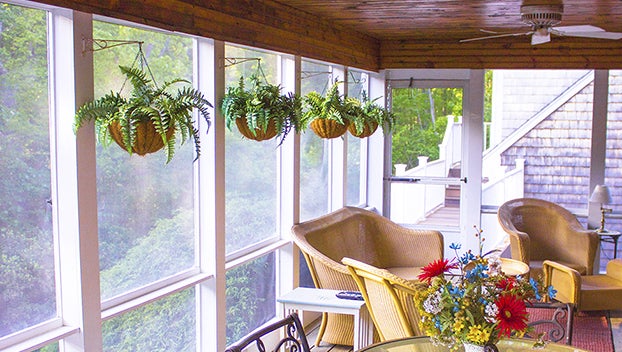TEXAS CERTIFIED EXPERT GARDENER — Location matters when relocating houseplants outdoors
Published 12:02 am Wednesday, March 6, 2024

- Every plant variety has specific requirements, which must be supported for the plant to flourish. (Courtesy photo)
|
Getting your Trinity Audio player ready...
|
I could be wrong, but it seems to me that Spring has arrived, a bit early but I’m certainly grateful, though the official first day of Spring is March 19.
Most of us have been busy working outdoors as time permits, sprucing up our outdoor spaces: mowing lawns (de-thatching dead grass), raking leaves, pruning trees, removing weeds, and adding soil amendments, preparing areas for planting flowers, vegetables, trees and shrubs.
While we remain busy outside getting our landscapes in order, many of us have also started relocating plants from protected areas inside of our homes, garages, greenhouses and porches strategically placing them outdoors.
Due to the number of plants, the relocation process (this process takes me several days), as we take time to carefully determine the best fit for each plant, rather than placing all of them into a single location.
Every plant variety has specific requirements, which must be supported for the plant to flourish. The amount of sunlight & shade, proportions of moisture and nourishment cohesively integrated form the basis for ideal plant well-being.
Each time we meet a plant’s “requirements,” we are graciously rewarded as the plant will demonstrate robust growth, providing us with an abundance of flowers and bountiful harvests.
My recommendation is to begin relocating houseplants from indoors to outside when night temperature range is between 50 to 55F. But hold one just a moment before getting too carried away with the “drop & run” approach (gardeners — all of us are guilty of this from time to time) to relocating plants, take the time to examine each plant in your collection: top to bottom.
Inspect stems, limbs, leaves (topside and underneath) looking for abnormal conditions and reviewing the plants’ overall health. Search for powdery mildew, mites, white flies, and other pests who have over-wintered indoors, voraciously “snacking” on a captive audience!
If you discover pests munching on plants, don’t ignore the issue! Most often these invaders can be killed with a quick spray of an insecticidal soap solution (it may take a couple of spray applications) but be certain to follow the manufacturer’s directions printed on the label.
This is a good time to remove diseased stems, yellowed or brown leaves, and water thoroughly. Plants, which are top-heavy “leggy,” fill their container, or no longer look attractive need focused care and attention. It’s time to “Spring” into action (yep, I went there … couldn’t stop myself) as spring is the best time to “freshen” houseplants by repotting plants using a fresh potting soil mix before relocating them outdoors for our warmer months.
Begin by selecting a new container that’s one size larger than the plant’s current pot unless the plan is to divide the plant. Water the plant thoroughly before removing the plant from the existing container, otherwise the plant roots will be damaged.
The amount of force necessary to remove root-bound plants from pots can easily destroy plants when roots are separated from stems … not a good thing (speaking from numerous personal experiences).
Gently pull the plants base and remove the root ball from the container by rolling and tapping the container. Once removed, inspect the root ball for damaged or diseased roots, and using a sharp knife or hand pruners (disinfected with isopropyl alcohol), remove damaged and diseased roots.
Where roots are grossly tangled, gently ‘tease’ apart sections using your fingers as claws, untangling the roots slowly. Repot the untangled root ball into fresh houseplant potting soil and water the plant thoroughly.
Every year, well-intentioned gardeners choose to move houseplants and return overwintering tropical plants outside for the warmer months (me included). Unfortunately, an immense number of houseplants suffer from the intense effects of too much sunlight.
Transitioning a houseplant from dimly lit areas within our homes to intense, extremely bright sunlight causes sunscald, or severe leaf burn. Direct sunlight overwhelms chlorophyll in plant leaves causing the leaf temperature to rapidly increase and overheat, blistering leaves on a cellular level (plant version of sun burn).
An hour of direct sunlight can cause extreme leaf damage, which may take a plant many months to recover. Use the following tips to aid plants during relocation outdoors:
Throw Them Some Shade (The Good Kind) – many indoor plants enjoy bright light but not direct sunlight. It’s best for plants when relocating them outdoors to position them directly beneath a tree or large shrub, allowing the canopy to filter and shade the plant.
They can often remain in place in these shady areas until fall, typically growing well. Sun-loving plants such as cacti, Bird-of-Paradise, and Fiddle-leaf fig should be moved into lightly shaded areas initially, then slowly transitioned to more brightly lit areas over time.
The most intense sunlight level occurs between the hours of 10 a.m. to 4 p.m. Limiting houseplants’ sunlight exposure midday is important to protect plants from sunburn and for maintaining over-all plant health.
Protected Areas (Porches and Patios) – horticulturists recommend placing houseplants on porches and patios during the summer months since these areas of our homes often provide bright light, but care must be taken not to place plants in direct sunlight exposure.
Each time a plant is moved a period is required for the plant to acclimate to the new space and often changes may become evident. Sometimes leaves yellow or lighten, partially folding.
Typically, once adjusted to their new environment, leaves return to normal green hues. Once houseplants have adjusted to their new space and light intensity, provide them with additional food, and begin a fertilization program using organic, water soluble fertilizers of choice by following the manufactures guidelines and labeled instructions.
Less is more when fertilizing plants and always remember, overfertilizing any plant is detrimental to our environment!
Thirsty-Provide Them Refreshments – water plants frequently, the majority of container grown plants perform best when the soil is allowed to become slightly dry before watering. Water deeply & thoroughly until water runs from the pots drain holes.
Once summer arrives most container plants require daily watering or at least every other day, while smaller containers require twice daily watering. Do not allow plants to become stressed and wilt before watering.
Send Certified Texas Expert Gardener John Green your questions and please continue sending comments to jongreene57@gmail.com.





